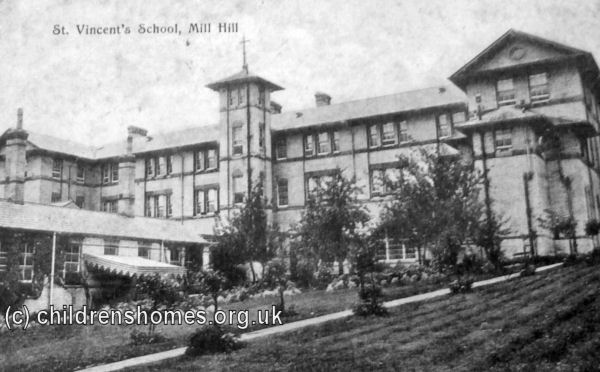The Daughters of Charity of St Vincent de Paul
The Daughters of Charity were founded in 1633 by a French priest, Vincent de Paul, and a widow, Louise de Marillac. They undertook a variety of work among the poor of Paris, running hospitals, working in prisons, and establishing homes for orphaned children. The Order quickly grew and by time of de Paul's death in 1660, had more than forty branches across France.
The Order's first venture in England was at Salford in 1847, where they visited the sick and held classes for factory girls. However, in a wave of anti-Catholic agitation, the Sisters were physically attacked and their house set on fire. In 1849 the Sisters retreated to Paris but returned in 1857 to Sheffield where they again began visiting the sick and running evening classes for girls. A member of the Sheffield community went on to take charge of the St Joseph's Reformatory for Girls, opened at Howard Hill, near Sheffield in 1861.
In 1859, the Order founded a large establishment at Westminster, known as St Vincent's. In 1863, its new building on Carlisle Place included an orphanage, workroom and day middle school for girls, an 'infant asylum nursery' or crèche, a night school for men and boys, and a soup kitchen. A second London home, St Vincent's School for Boys, was opened in 1887 at Mill Hill.

St Vincent's, Mill Hill, c.1905.
St Elizabeth's School at Bullingham, near Hereford, was opened in 1861 and as well as an orphanage for poor girls included a 'middle-class' girls' school. In 1875, a second establishment, St Vincent's, was opened in Hereford itself for children between the ages of three and eight.
A presence in Scotland began in 1864 when the Smyllum Orphanage was established near Lanark. It catered for Catholic children aged from 1 to 14 years at their time of admission. In 1888, 440 children were in residence. Like its English counterparts, the Orphanage was supported by the parochial boards that administered Scotland's poor relief system. By 1890, 42 boards had placed their Catholic children at the institution. The Orphanage inmates included blind and deaf-mute children. In 1890, it was noted that deaf-mutes were 'taught by the new system of articulation and lip reading by a teacher specially taught in London to teach the dumb.'

Smyllum Orphanage, near Lanark, c.1905. © Peter Higginbotham
St Elizabeth's School for Girls was opened in Salisbury in 1868, becoming the Order's first Industrial School in 1875. Another girls' Industrial School, St Joseph's, was opened in 1892 at Darlington. It was followed by one for boys in 1894 at Elswick, near Newcastle upon Tyne. In 1896, the Sisters were asked to run the new Bishop O'Reilly Memorial School at Preston.
In the twentieth century, the Order ran several dozen other establishments for children and young people in England and Scotland. These included the St Joseph's Hospital for the Mentally Handicapped at Rosewell (opened 1924), St Vincent's Open-air School at Dover (1927), Our Lady's Hostel for Business Girls at Willesden (1928), the Mother and Baby Home at Salford (1932), and the St John's Home for Girls at Erdington, Birmingham, which became an Approved School in 1948.
By the end of the 1980s, the Order had closed virtually all its children's residential establishments in Britain.
The Daughters of Charity should not be confused with the Society of St Vincent de Paul, a lay organisation founded in Paris in 1833 and established in England in 1844. Its object was 'to visit the poor, and to assist personally at their homes by moral and material help as far as possible'. The English branch of the Society was particularly involved in children's provision in the Catholic Diocese of Westminster. The charity is still very active today.
Records
Note: many repositories impose a closure period of up to 100 years for records identifying individuals. Before travelling a long distance, always check that the records you want to consult will be available.
- Daughters Of Charity Of St Vincent De Paul, Provincial House, The Ridgeway, Mill Hill, London NW7 1RE. (Archivist: Sister Bernadette Ryder DC) Although the Daughters of Charity retain a large collection or records themselves, those for many of the homes they ran are held by other organizations — see individual pages for details.
Bibliography
- O'Brien, Susan Leaving God for God: The Daughters of Charity of St Vincent de Paul in Britain 1847–2017 (Darton, Longman and Todd, 2017)
- Prunty and Sullivan (eds.) The Daughters of Charity of St Vincent de Paul in Ireland: The Early Years (Columba Press, 2014)
Links
Except where indicated, this page () © Peter Higginbotham. Contents may not be reproduced without permission.


